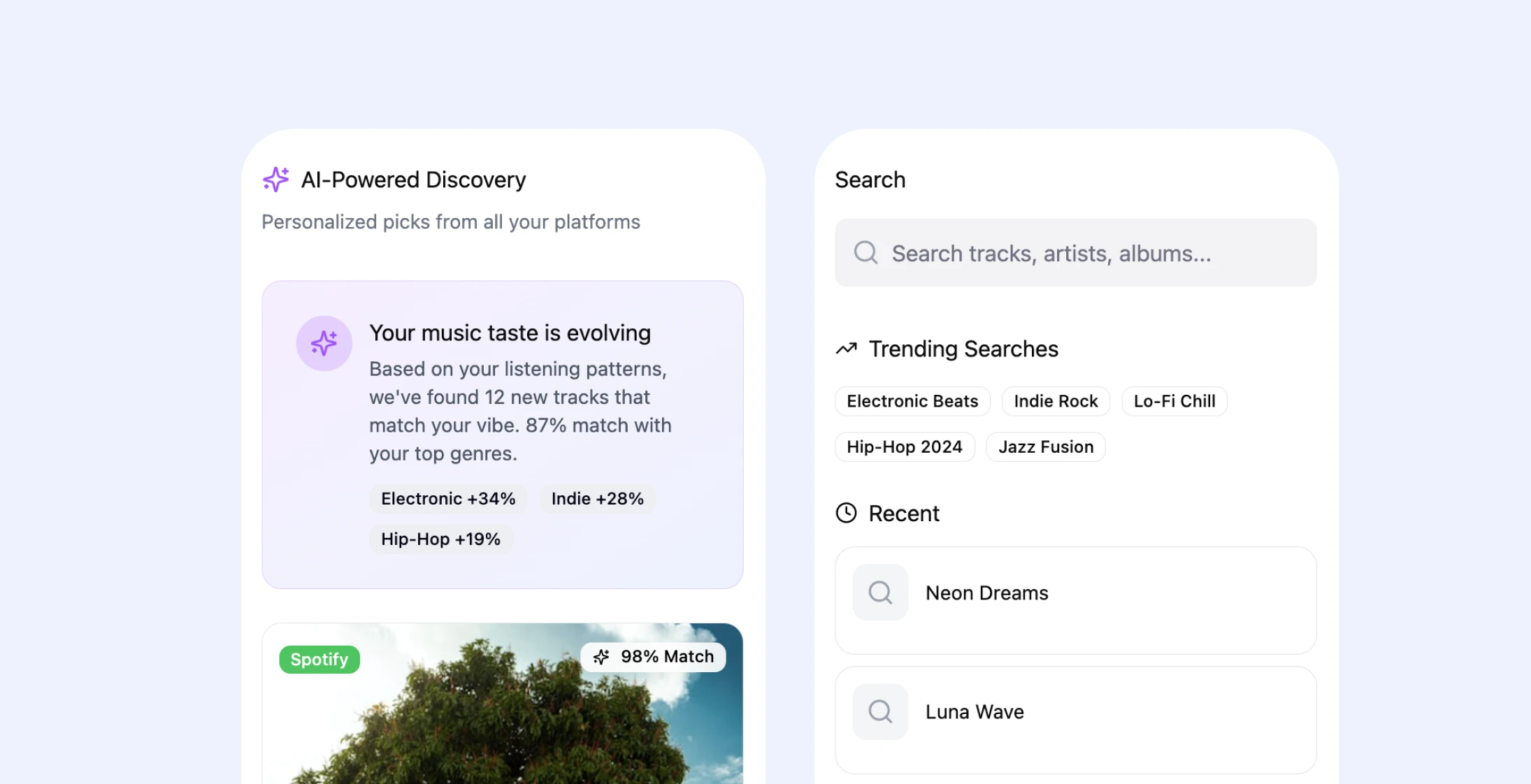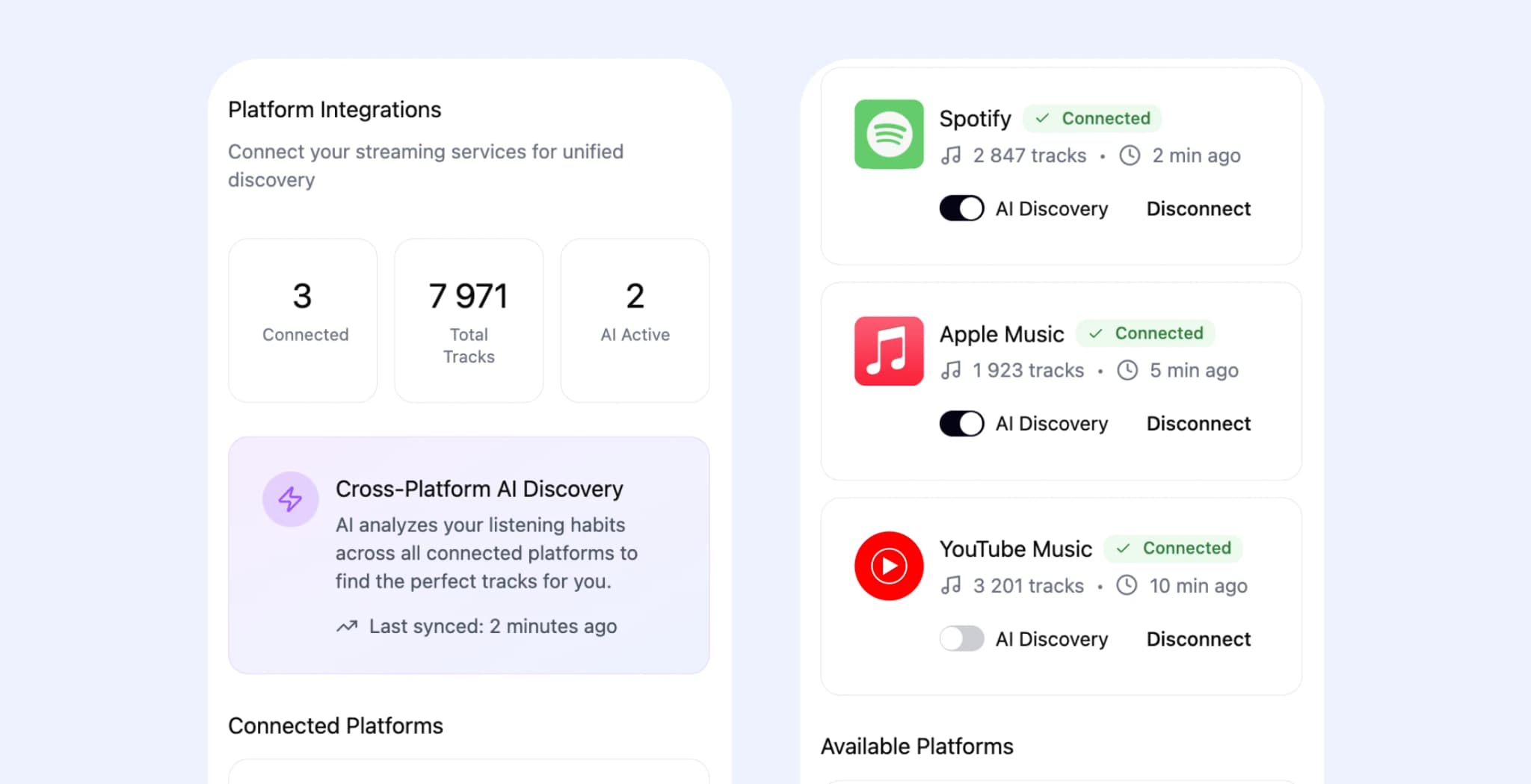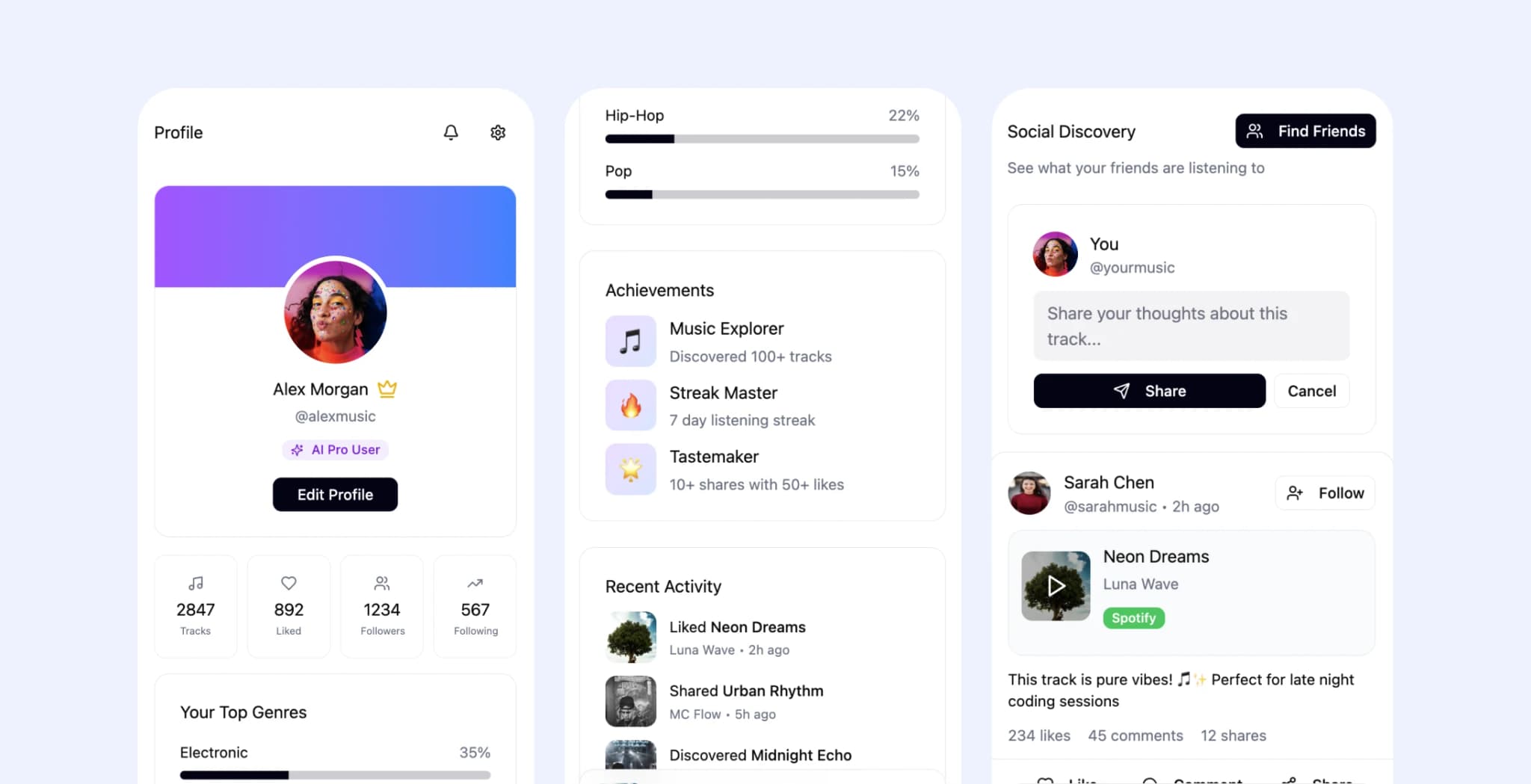


Project Overview
Music lovers often find it difficult to enjoy experiences with streaming services as they have to curate playlists manually and miss out on advanced discovery features.
The world of music streaming has evolved into a fragmented ecosystem where users subscribe to multiple retail ecommerce platforms for various reasons - Spotify for playlists, Apple Music for exclusive content. This creates several challenges including duplicate playlists and inconsistent recommendations.
The Challenge
Fragmented User Experience
Streaming services typically focus on keeping users engaged within their platforms, creating data silos that limit comprehensive understanding of user preferences.
- Manual playlist management leads to missed content opportunities
- Social connections are scattered across different platforms
- Music catalogs grow rapidly with over 100,000 tracks added daily
- Manual curation becomes increasingly unfeasible
Technical Limitations
Contemporary audiences expect intelligent systems that understand preferences and adapt to moods and situations. AI blockchain integration addresses these technical challenges include:
- API rate limitations across platforms
- Varying metadata structures
- Real-time synchronization requirements
- Privacy compliance across different regions
Core Problems Identified
The main difficulty arose from three interconnected issues:
Fragmented Data Sources
- Listening histories and playlists scattered across platforms
- Incomplete user profiles leading to ineffective recommendations
- Users managing multiple interfaces and subscriptions without receiving proportional value
Recommendation Insufficiency
- Algorithms functioning on limited datasets
- Inability to utilize cross-service listening trends
- Cold start problems for new users
- Filter bubbles restricting discovery for long-time users
Social Isolation
- Friends using different platforms cannot effectively collaborate
- Limited cross-platform playlist sharing
- Loss of social context that typically fuels music exploration
Technical hurdles included synchronizing data in real-time across APIs while maintaining user privacy, scaling recommendation calculations for millions of users, and ensuring near-instantaneous response times.
The Solution
Platform Integration Architecture
The platform implemented a unified aggregation structure that combines real-time streaming service integration with AI-driven personalization and social discovery features through blockchain consulting.
Core Components:
- Preference synthesis engine to harmonize user data across platforms
- Privacy-preserving architecture ensuring immediate responsiveness
- Cross-platform data models simplifying recommendation algorithms
- Social graphs connecting users across different services through smart contract development
Technical Implementation
Microservices Framework
- Individual services for platform connections and core operations
- API Gateway handling authentication and request flow management
- AI recommendation system using machine learning models
- Redis Cluster for caching frequently accessed recommendations
- Apache Kafka for event streaming and asynchronous processing
Security and Compliance
- OAuth 2.0 flows for platform integration
- JWT tokens for user session management
- Encryption at rest for sensitive preference data
- GDPR and CCPA compliance with granular consent management through security audits
System Architecture Components
| Component | Technology | Purpose |
|---|---|---|
| API Gateway | Custom | Authentication and request management |
| Recommendation Engine | Machine Learning | AI-driven content delivery |
| Caching Layer | Redis Cluster | Fast data access |
| Event Processing | Apache Kafka | Asynchronous updates |
| Container Orchestration | Kubernetes | Microservices deployment |
| Monitoring | Prometheus/Grafana | Metrics and visualization |
Results and Impact
User Engagement Improvements
The implementation resolved content discovery issues, significantly boosting user engagement:
- 67% increase in new track adoption
- 23% growth in listening session duration
- 156% enhancement in user-generated content sharing
- 91% accuracy in AI-generated playlists (vs 64% industry average)
Technical Performance
- 38% reduction in third-party API integration costs
- 89% improvement in recommendation model accuracy
- 78% decrease in customer support tickets related to synchronization
- 45% boost in premium feature adoption
Business Impact
- 34% increase in revenue per user
- 180% surge in user numbers
- 33% infrastructure cost increase offset by improved user lifetime value
- Reduced cost per engaged user ratio
Transform Your Music Discovery Experience
Experience personalized recommendations across all your streaming platforms with AI-powered social discovery.
Key Performance Metrics
New Track Adoption
Increase in discovery
Playlist Accuracy
AI-generated accuracy
User Growth
User base expansion
Revenue per User
Revenue increase
Implementation Challenges and Solutions
API Integration Complexity
The complexities of integrating multiple APIs exceeded initial projections, particularly with platforms having different rate limiting mechanisms and inconsistent error feedback.
Solution: Allocated 40% additional development time for integration stabilization and enhanced error handling capabilities.
Real-Time Synchronization
Real-time coordination presented more difficulties than anticipated.
Solution: Implemented eventual consistency models that provided better user experience than blocking operations, with user notification of synchronization status.
Cold Start Problems
Recommendation accuracy for new users with limited cross-platform history remained challenging.
Solution:
- Introduced explicit preference onboarding
- Utilized social network data for initial suggestions
- Significantly improved new user experience
Social elements integrated into music discovery processes showed higher engagement when contextually relevant during listening sessions rather than as isolated social interfaces.
Technical Architecture Details
Scalability Considerations
- Microservices framework allowing independent scaling
- Event-driven architecture for asynchronous processing
- Distributed caching strategies
- Load balancing across multiple platform integrations
Error Handling and Resilience
- Circuit breakers for API failure management
- Graceful degradation when platforms are unavailable
- Fallback mechanisms to individual platform experiences
- Comprehensive monitoring and alerting systems
Data Management
- Platform-specific caching strategies based on update frequencies
- Privacy-preserving data synchronization
- Backup systems for preference data
- Compliance with varying regional privacy regulations
Lessons Learned
Privacy-First Approach
Privacy regulations demanded a more comprehensive approach to consent management than originally planned. Integrating privacy controls as fundamental components rather than compliance additions would have simplified implementation and enhanced user trust.
Platform-Specific Degradation
Ensuring graceful degradation for each streaming platform separately proved essential. When specific platforms faced disruptions, users maintained access to music discovery from other services without losing core functionality.
Caching Strategy Optimization
Tailoring caching strategies to account for platform-specific update patterns was crucial. Different user behavior patterns across platforms required adaptive caching policies to avoid stale data issues.
Future Considerations
The success of this integrated platform demonstrates the value of breaking down silos in music streaming while maintaining user privacy and platform compliance. The architecture provides a foundation for expanding to additional content types and social features while scaling to accommodate growing user bases and evolving streaming service landscapes.


